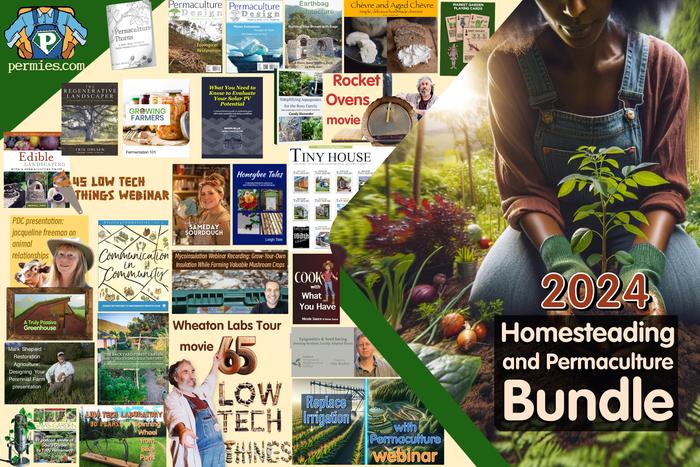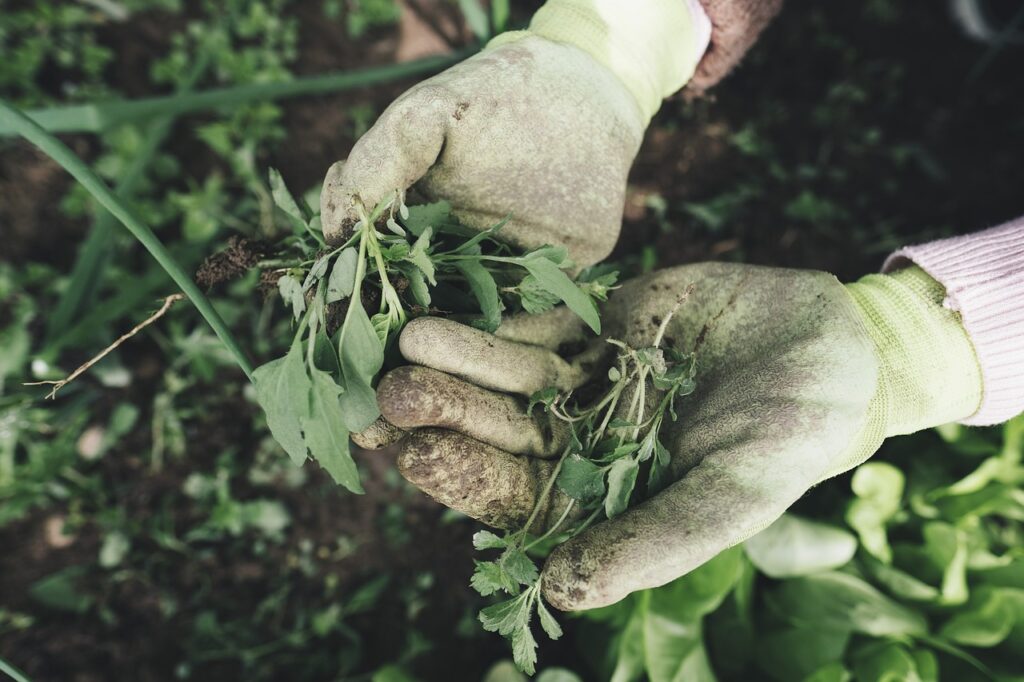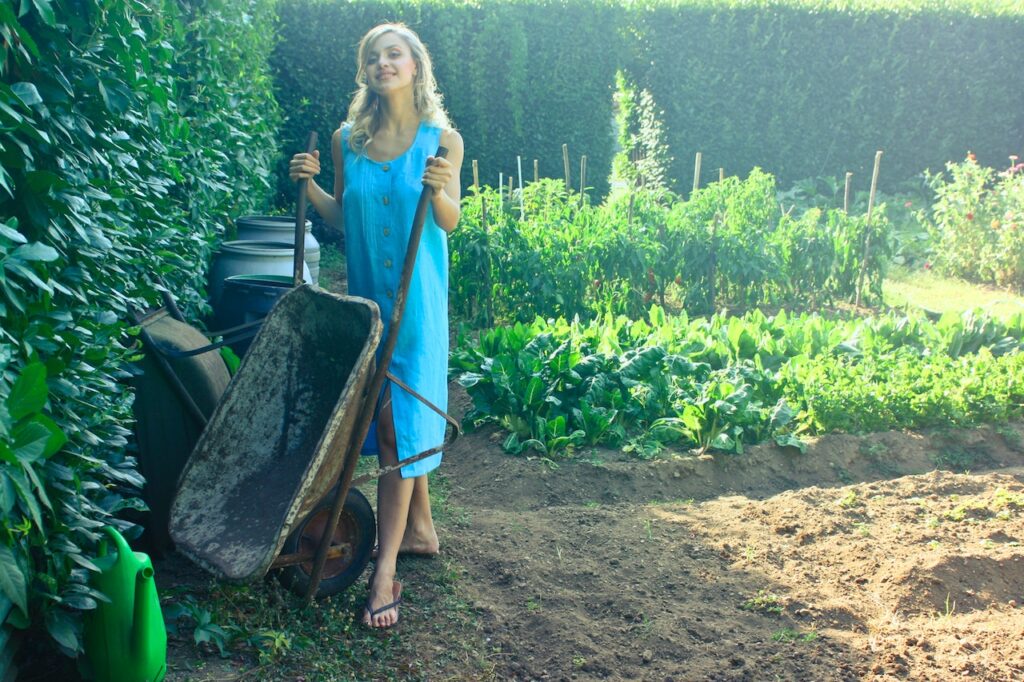When some people think of gardening, they think of the back breaking effort of pulling weeds. But let’s look at some other options, ones that will avoid harsh herbicides.
Nature Abhors a Vacuum
It is late Winter/early Spring. The corn and soybean fields around here in NE Kansas are bare. Too bare. They cleared or plowed the fields in the Fall and they have been collecting windblown weed seeds all Winter. The farmer will blast them this Spring with Roundup while he grows Round-up ready crops.
The same thing can happen in your garden if you leave the ground uncovered. Nature abhors a vacuum. It has been gathering seeds that have blown on it all Fall and Winter.

Where in Nature do you see bare Earth – besides the desert? You don’t. So let’s avoid it, or minimize the time that your garden soil is left bare.
One way to do this is to leave the garden brush in place in the Fall, without clearing it. Leave it as a mulch. Then either clear it more in the Spring, hopefully as close to planting as possible.
Plant Cover Crops as a Weed Barrier
Another strategy is to start a low lying cover crop late in the Fall or earlier in the Spring so that you get a green covering as things start to grow in the Spring. This also keeps in moisture. You want something that will grow enough in the Fall, overwinter without freezing to the ground, and start back up early in the Spring. Many also are nitrogen fixing – improving the nitrogen in your soil. Options are winter pea, hairy vetch, winter lentils. The hairy vetch is the most hardy and also the most nitrogen fixing.

You plant this in the Fall, and then it will keep the ground covered in the Spring. You seed or plant your garden plants between the plants (works best with plant starts).
Mulching
Because I have a free supply of wood chips, I use heavy mulching with wood chips around my plants. In the Fall, I add soil and amendments. I then cover the whole garden with wood chips. In the Spring, I may turn it over somewhat, or just dig out a hole and add seed or a plant start.

After I seed a bed, I will lightly sprinkle with compost and a light layer of wood chips.
My favorite weeding strategy – Companion planting
Besides mulching with wood chips, my favorite strategy is to companion plant, or to succession plant. I will plant a larger plant, like kale, and then seed a cut-and-come-again lettuce like Black Seeded Simpson or Tatsoi around it. The lettuce doesn’t form a head of lettuce. The kale will outgrow the lettuce and the lettuce will ground cover and choke out any weeds, while still being edible.
I sometimes will ignore spacing and overplant. Sure, I may not get a large plant, but I get more plants and better coverage. (Does not work with root vegetables like carrots or beets).
Milpa gardening
Another way I deter weeds and pests is by mega overplanting with the Milpa gardening technique, This is densely planting 30-40 types of seeds in one bed. The core are the Three Sisters – corn, squash, beans. It also includes buckwheat, cowpeas, okra, and pollinators.
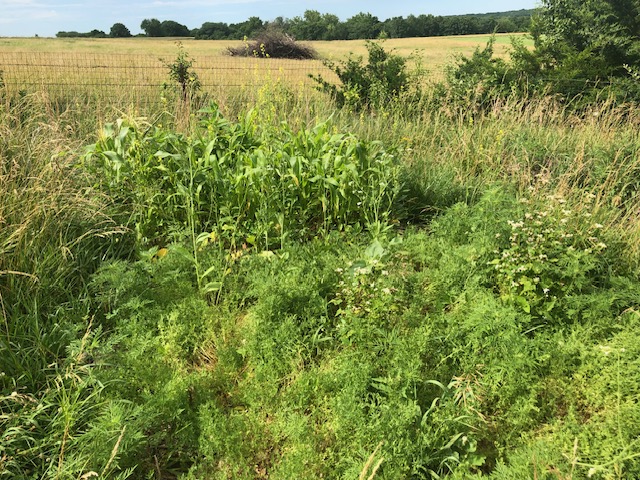
I use this method when creating new in-ground garden beds. I broadfork the sod over, add a layer of compost and amendments. Spread the seed, and cover with a light layer of wood chips. The dense planting protects the plants, and is especially helpful to deter squashbugs and cabbage moths.
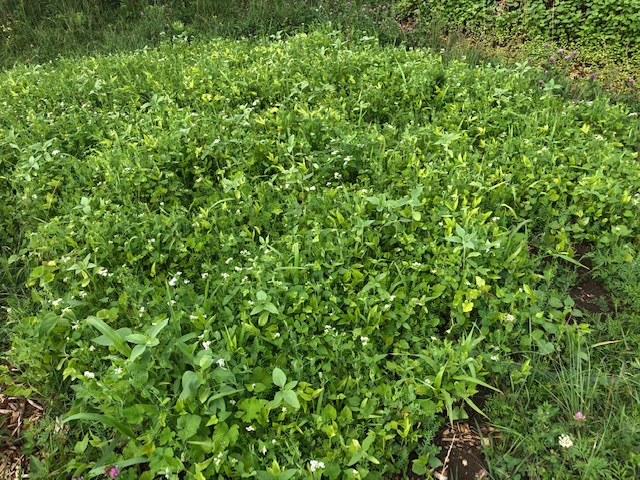
At the end of the season, the Milpa plot has extensive brushy leftovers which can be chopped and dropped as mulch for Winter.
What about cardboard or plastic?
I create paths with cardboard and then cover it with wood chips so that I don’t have to pull weeds (mostly hay blown from nearby fields) in my garden paths. I usually need to do this every two years. If you use cardboard, be sure to remove all tape. Otherwise you will be digging up plastic tape for some years to come. I am still digging up plastic tape from where I was not thorough enough.
Some people use plastic, like Herrick Kimball over at PlanetWhizbang.com in his Mini-bed Gardening strategy.

I used plastic between beds and in paths in the first year on my property and it mostly just slid around. Some of the plastic ripped. I don’t use plastic for mulch anymore because I still find some plastic pieces years later. There are also plastic pieces in two local sources of municipal compost. The plastic bags and twist ties leave plastic pieces in the finished compost, plus (no doubt) micro-plastics.
Pause for this quick ad:

Mindset – Weeds are food
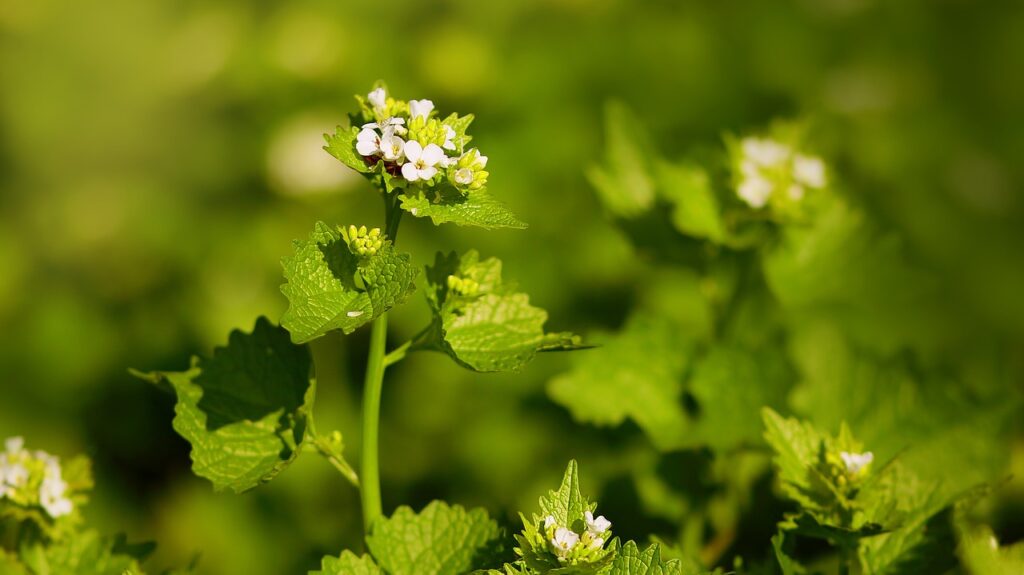
Henbit, lambs quarters, black mustard, sorrel, wild garlic chives. These are just a few of the “weeds” in my garden that are forgeable food. Especially in the “Weeks of Want”. Before supermarkets, there was a gap when the stored food would run low and when the Spring crops were ready. People would rely on foraged food during this time. There is a place in your garden for weeds like this, especially lambsquarters and wild mustard. Henbit, young lambsquarters, and mustards can be nice additions to your salads, Just don’t “overdo” them. Some of the deep greens, like lambsquarters, have high level of oxalic acid, which can have health impacts when eaten raw in large amounts. Just cook/steam them and they will be fine.
Make weeding a part of your routine
If you only weed once a week or every two weeks, it will be a harder chore and you will hate it. Make a journey to your garden every day, a bright highlight of your day. I work from home, and I spend 15 minutes in the garden at lunchtime. It helps me re-center and de-stress.
When you visit the garden, if you see a weed, pull it up. You’ll catch them earlier, when they are less numerous, and the weeds will be smaller and easier to pull up.
This article is cross posted from ThrivingNews.com – Thriving Community news, without the Noise.

Check out the NEW 2024 Homesteading Bundle from Permies, which has 35 e-books, courses, videos.
What I really liked:
- The Backyard Forest Garden e-book
- Agroforestry
- Restoration Agriculture: Designing Your Perennial Farm presentation from Permaculture Voices by Mark Shepard
- Permaculture Thorns, A Book About Trying to Build Permaculture Community, by Paul Wheaton.
- Plus 2 books by Nicole Sauce.
